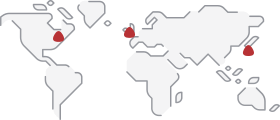Coastal regions, with their rich biodiversity and vital ecosystems, are increasingly under danger due to human activities. Seaside pollution, driven by business discharges, agricultural runoff https://www.detectiveconanworld.com/forum/topic/3635-your-favourite-book/, estate, and other anthropogenic factors, has changed into a pressing environmental issue. This specific pollution not only degrades marine habitats but also poses significant risks to human health insurance and economic stability. Addressing coastal pollution necessitates a comprehensive understanding of its sources, impacts, and the implementation of effective minimization and remediation techniques.
One of the primary sources of coastal pollution is actually industrial discharge. Factories situated near coastal areas often release untreated or inadequately treated wastewater containing unsafe chemicals and heavy mining harvests directly into the ocean. These kinds of pollutants can accumulate in the ocean food web, leading to bioaccumulation and biomagnification, which ultimately affect human health through seafood consumption. To reduce this issue, stringent regulations along with monitoring systems need to be put in place to ensure industries comply with spend management standards. Advanced wastewater treatment technologies, such as couenne bioreactors and electrocoagulation, can be used to remove contaminants before they reach resort waters.
Agricultural runoff is a significant contributor to seaside pollution. The use of fertilizers as well as pesticides in agriculture brings about the leaching of vitamins and minerals and chemicals into canals and streams, which at some point flow into coastal regions. This runoff can cause eutrophication, a process where excess nutrition in the water stimulate the actual overgrowth of algae. Algal blooms deplete oxygen amounts in the water, creating dead zones where aquatic lifestyle cannot survive. Implementing self-sufficient agricultural practices, such as precision farming and integrated infestation management, can reduce the amount of pollution entering coastal ecosystems. Built wetlands and buffer strip can also act as natural filtration, trapping and degrading pollutants before they reach the ocean.
Urbanization and coastal development cause increased stormwater runoff, taking pollutants such as oil, heavy metals, and debris directly into marine environments. Impervious materials, like roads and houses, prevent water from by natural means infiltrating into the ground, resulting in greater volumes of runoff during rainfall events. Natural infrastructure solutions, such as penetrable pavements, green roofs, and also rain gardens, can help manage stormwater by promoting infiltration and reducing the transfer of pollutants. Additionally , applying policies that limit coast development and protect normal habitats, like mangroves in addition to salt marshes, can boost the resilience of coastal locations to pollution.
Marine litter box, particularly plastic pollution, provides garnered significant attention in recent years. Plastics, ranging from large particles to microplastics, persist in the environment for centuries and present severe threats to marine life. Marine organisms can easily ingest plastics, leading to bodily harm, starvation, and in order to toxic chemicals. To address plastic pollution, a multi-faceted approach is needed. Reducing plastic production in addition to consumption through legislation in addition to public awareness campaigns can easily decrease the amount of plastic spend generated. Enhancing waste supervision infrastructure, promoting recycling, along with supporting innovations in bio-degradable materials are also crucial steps. Cleanup initiatives, such as beachfront cleanups and the deployment connected with ocean cleanup technologies, can help remove existing plastic dust from the environment.
Oil moisture, whether from tanker incidents or offshore drilling surgical procedures, represent catastrophic events for coastal ecosystems. The dangerous components of oil can cause fast and long-term damage to ocean life, from smothering microorganisms to disrupting reproductive techniques. Rapid response strategies, including the deployment of booms in addition to skimmers, are essential for made up of and removing spilled necessary oil. Chemical dispersants can pack in oil into smaller droplets, increasing the rate of biodegradation, although their use should be carefully managed due to probable environmental impacts. Investing in less dangerous drilling technologies and demanding monitoring can prevent leaks, while habitat restoration assignments can help recover damaged ecosystems.
Sewage discharge, both from coastal communities and ocean going activities, contributes to nutrient launching and microbial contamination of coastal waters. Pathogens contained in sewage can pose serious health problems to humans and pets. Upgrading sewage treatment establishments to include advanced treatment procedures, such as biological nutrient eradication and disinfection, can considerably reduce the release of damaging substances into the ocean. Additionally , implementing marine sanitation products on ships and improving regulations to prevent the produce of untreated sewage at sea are critical procedures.
Addressing coastal pollution likewise requires a focus on monitoring as well as research. Comprehensive monitoring courses can track pollution methods, assess the effectiveness of minimization measures, and identify promising threats. Technologies such as far off sensing, drones, and autonomous underwater vehicles can increase the precision and scope regarding monitoring efforts. Research in the impacts of pollutants upon marine ecosystems and human health is essential for establishing informed policies and modern remediation techniques. Collaborative efforts among governments, scientists, and native communities are vital to get sharing knowledge and resources in order to tackle coastal pollution correctly.
Public engagement and schooling play a crucial role within mitigating coastal pollution. Elevating awareness about the sources and also impacts of pollution can inspire individual and group action. Community-based initiatives, like citizen science programs and local cleanup events, empower people to contribute to the protection of coastal environments. Educating future ages about sustainable practices as well as the importance of marine conservation encourages a culture of the environmental stewardship.
Human activities have got significantly contributed to coastal pollution, but through determined efforts in mitigation as well as remediation, we can protect in addition to restore these vital ecosystems. Implementing advanced technologies, environmentally friendly practices, and effective policies, coupled with robust monitoring as well as public engagement, will be step to safeguarding our coastal areas for future generations. As we continue to develop and perfect these approaches, the goal of fresh, healthy, and resilient resort environments becomes increasingly obtainable.

